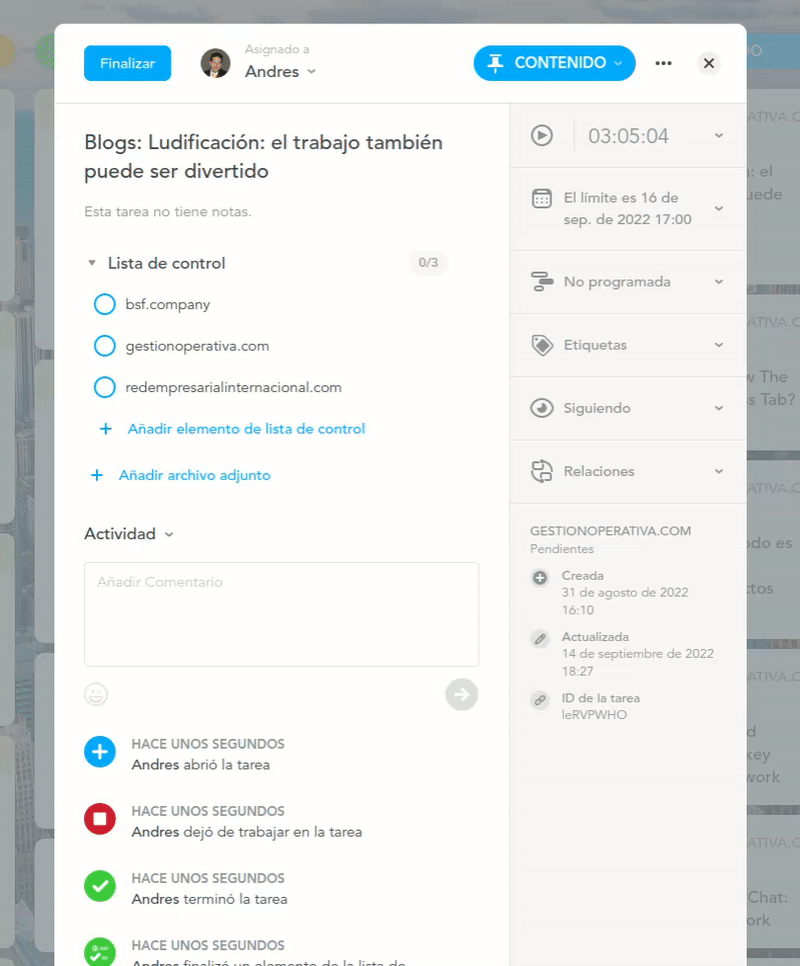We all know that feeling: when Monday morning rolls around, and we just can’t seem to get motivated to work. I wish there was a way to make work more fun, right? Well, there is! It’s called gamification, and that’s why I’m going to talk to you about how to implement gamification in your business processes.
First, The Basics: What Is Gamification?
Gamification is the process of using game-like elements in non-game contexts to engage and motivate people.
On the business side, this can take the form of adding badges, scores, and leaderboards to everyday tasks to make them more fun and engaging. And best of all, it doesn’t have to be expensive or time-consuming to implement.
That is why I will share with you below the 3 tactics that we use to use in my agency BSF.company when we implement gamification elements in the digital solutions we make for our clients.

3 Tactics To Implement Gamification In Your Business Processes
Implementing gamification in your business processes can definitely generate benefits and competitive advantages, but doing it properly can be easier said than done. That is why, in the lines below, I share with you 3 of our most useful advices for building gamification in your company, products and services.
1. Define What You Want To Achieve
The first step to implement gamification is to decide what you would like to achieve with it.
- Do you want time optimization?
- Increase levels of commitment?
- Generate new ideas?
- Reduce costs?
- Generate more leads?
- Increase your sales?
Be clear about your objectives from the beginning to be able to design your gamification strategy based on that concept.
2. Identify What Needs a Boost
Once you know what you want to achieve, identify which tasks in the company could be gamified.
Be clear about your objectives from the beginning, to design your gamified elements around that concept.
Usually, gamification is implemented in the activities that are more boring, repetitive or less attractive for your collaborators, employees, or clients.
For example, if you want employees to be more engaged in their work, consider adding Gamification elements to onboarding or training programs. Implementing leaderboards for your audience, employees or clients can also generate great results.
3. Choose Your Gamification Elements
Not all Gamification elements are born the same. When choosing which ones to use, keep your goals in mind. Choose items that will help you make it happen.
For example, if your objective is to increase loyalty with the company, consider the possibility of using points. Employees could accumulate those points over time.
As time passes, they could exchange those accumulated points for discounts on products/services of the company, or products/services of strategic allies.
Alternatively, you can implement visual elements like images, animations, notifications. It is also worth experimenting with educational elements such as interactive videos, games, etc.
Examples Of Gamification In Business
It’s not surprising that many companies are adopting this type of strategy today. Especially, if we consider that gamification is one of the features your customers already expect by default in your products and services.
However, not all of them do it properly. That’s why it is important to decide wisely where to look for references.
In the lines below, you’ll see three examples of what I consider properly done gamification strategies.
a) Gamification In Your Daily Tasks
A solid example of Gamification For Business is the case of Meister, the Austrian startup behind the productivity suite preferred by millions worldwide:
Recently, MeisterTask added a series of animations that appear when its users complete items on a checklist, and also when they complete tasks on one of its Kanban boards.
This way, employees see some graphic elements that add a touch of color and fun to their typical working journey.

b) Gamification In Virtual Communities
For this, Meister have done it again. They’ve got a great example of a leaderboard implemented in their recently launched Meister Community, which I’m honored to be part of.
The Meister Community, is the platform where professionals from around the world exchange ideas, learn about these wonderful products, its features, and ask or answer questions to other users about best practices using these tools.
The users with the most interactions and positive responses inside the platform are those with the highest-ranking score in the leaderboard.

c) Gamification In Your Brand’s Content
Another practical example of gamification is the interactive activity that my team have prepared for you in the following lines.
Through this short and easy activity, I want you to experience first hand how embedded gamification elements in your pre-existing content could achieve several goals:
- Increase interaction on digital platforms of your brand.
- Achieve differentiation in the mind of your prospects.
- Rank better in search engines.
- Encourage readers to sign up in the #1 productivity blog 😉
Without further ado: the following game is based on this article, so it shouldn’t be that difficult to reach the maximum score. Are you up to this challenge?
It would be a shame if you lose your hard-earned points after closing this window without registering, don’t you think?
In Conclusion
Gamification can be a great way to engage and motivate your business collaborators and customers, but it’s effective only if it’s done right.
By following the steps and examples above, you can create a gamification strategy that will help you achieve the results you want for your business.
If you prefer to leave it to experts with more than 10 years of experience developing gamification solutions for clients in various parts of the world, then it is time to contact BSF.company.
What are you waiting for? Start using gamification in your business processes today!
I hope you liked this article. Remember to leave me your ideas and questions in the comments section.
See you in the next edition.

BSF.company


